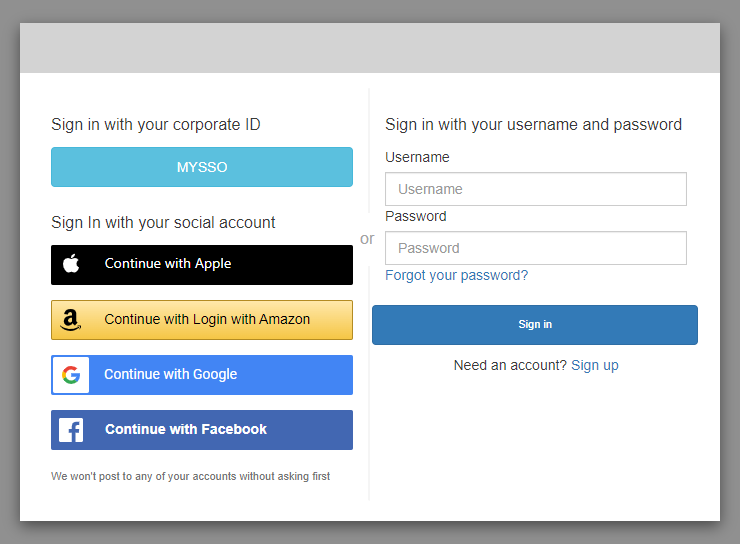Login endpoint
The login endpoint is an authentication server and a redirect destination from the Authorize endpoint. It's the entry point to the hosted UI when you don't specify an identity provider. When you generate a redirect to the login endpoint, it loads the login page and presents the authentication options configured for the client to the user.
Note
The login endpoint is a component of the hosted UI. In your app, invoke federation and hosted UI pages that redirect to the login endpoint. Direct access by users to the login endpoint isn't a best practice.

GET /login
The /login endpoint only supports HTTPS GET for your
user's initial request. Your app invokes the page in a browser like Chrome or
Firefox. When you redirect to /login from the Authorize endpoint,
it passes along all the parameters that you provided in your initial request.
The login endpoint supports all the request parameters of the authorize
endpoint. You can also access the login endpoint directly. As a best practice,
originate all your users' sessions at /oauth2/authorize.
Example – prompt the user to sign in
This example displays the login screen.
GET https://mydomain.auth.us-east-1.amazoncognito.com/login? response_type=code& client_id=ad398u21ijw3s9w3939& redirect_uri=https://YOUR_APP/redirect_uri& state=STATE& scope=openid+profile+aws.cognito.signin.user.admin
Example – response
The authentication server redirects to your app with the authorization code and state. The server must return the code and state in the query string parameters and not in the fragment.
HTTP/1.1 302 Found
Location: https://YOUR_APP/redirect_uri?code=AUTHORIZATION_CODE&state=STATE
User-initiated sign-in request
After your user loads the /login endpoint, they can enter a user
name and password and choose Sign in. When they do this,
they generate an HTTPS POST request with the same header request
parameters as the GET request, and a request body with their
username, password, and a device fingerprint.